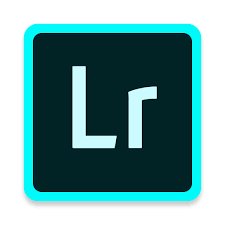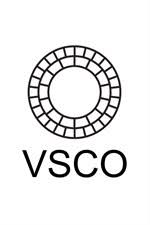The useful idiot’s guide to iPhone travel photography
- Glenn Dobbs

- Apr 22, 2019
- 7 min read
Updated: Nov 24, 2019

April 22, 2019 -
“No Glenn, your iPhone cannot do what my camera can” - Matt Walls
“The best camera is the one you have” - Anonymous
Matt is right of course. I know nothing about photography.
Over the years I have had a lot of cameras. Most of them were point and shoot. Even the one DSLR I owned I often set to automatic and mainly used as a point and shoot camera. I trusted the internal computer to mix the pixels right and hoped for the best.
I know nothing about photography.
As we began to travel, I would shoot hundreds of pictures hoping a few would turn out well by sheer luck. The rest would occupy the dungeon of my hard disk taking up space. I was loath to throw any away. They were memories after all. How could I do that?
I think I am not alone these thoughts. Everywhere we went there were people using their mobile phones to take pictures.
Please note the older woman in the picture above just looking at the event. She is the only one really seeing what is happening.
However, on this last trip to India, I accidentally discovered editing software. I am not talking about the 10 or so filters built into the native camera app. I am talking about more detailed editing to make your photos much better.
My curiosity was piqued. So I began to look at different ways to take better pictures.
How could I go from a picture like this from a market in England.

To this one from a market in India.


I knew that I didn’t want to be this guy. I saw a lot of guys like this out on the road lugging around pounds of very expensive gear and vaguely sneering at the mobile phone photographers. I am sure his shots are worthy of National Geographic but at what cost? You are so busy thinking of your shots that you miss what you are actually seeing. And all of that very expensive gear is a magnet for petty thieves.
I still want to travel lean, minimalistic, yet still get good photos.
So for me, the education began with editing software. Again, I know nothing about photography so all of this was by trial and error. I wanted to share a little of what I learned and maybe it will help you as well.
Here are editing options that worked for me -
The iPhone native app can do a lot of basic things. Exposure, contrast, tint, etc. It also offers a few filters. But that is it.
I found these programs apps better.

Snapseed - This is a free app from Google. If is simple to use and offers a full suite of options for you. You have to play with it, but it will make your pictures pop. It is my personal favorite.
Here is before Snapseed -

and after -

Here are some other good choices. Just pick one and learn it. -



And finally there are these two apps. Lightroom and VSCO.
They are both highly rated but VERY expensive. If I did work for National Geographic maybe they would be worth it. But I don’t. And I am betting you are not employed there either.
There are hundreds of YouTube tutorials on how to use these apps. They are fairly simple and you just have to play with them. I am getting better at it. At first I over saturated everything because it was so dramatic.
Like this picture

But I am learning to tone it down and still create great shots.
Before Edits

And after with more subtle edits

Here is a great on line free program on YouTube that will definitely improve your photography.
Emil has dozens of short videos on various topics
So all of this editing made me wonder if I could do something better with my pictures before having to edit them. We would be traveling and I would see something in the distance and want to take a picture. I would zoom in with my iPhone camera only to find the shots grainy and pixelated. It was I did not understand the difference between ‘digital’ zoom and optical zoom.
Digital zoom is when the camera’s computer tries to fill in pixels it thinks it is seeing. You are basically cropping the picture and letting less light into your sensor. And your sensor is only this big.

Optical zoom is using the glass of the lens itself. So your pictures are sharper and you have better images. As a rule, to get better pictures, you should never use digital zoom. Either move closer to your subject or don’t take the picture.
This was frustrating to me. We are planning a trip to Africa for Episode X soon.
Do I have to be this guy?

I learned that no you do not have to go that far. (Or spend that much.) There are a number of third party lenes you can add to your phone that increase your optical ability to take more detailed shots yet still be mobile and light weight. They will not be as sophiticated as Matt’s camera, but they can definately add a significant punch to your kit.
Here is one of many videos that explain your choices.
I went with Moment lenes. I really like the difference and I am looking forward to taking them on Episode VIII of the Road to Bali coming up in July. They are more expensive. But they are much less expensive than a DSLR. (Sorry Matt). And they provide a lot of support and instruction. There are cheaper options . You just have to shop a bit.
The next issue is how you shoot your pictures. You can use the native app. However there are sophisticated apps that give you more options.
The two most important features is the 3rd party apps allow you to select which lens you are shooting out of your iPhone (The wide angle or the tele — the native app does not allow you to do that) and they allow you to shoot in RAW mode.
I do not want to get to far into the weeds. Here are the basic facts. Mobile phones shoot in JPEG. This format is created by the computer in the app by determining for you exposure, britghtness, focus and compressing it for ease of use. The files are small and easily exported. But JPEG limits your ability to edit the shot.
RAW means there is no compression. All of the light from the image is exposed to to the sensor. So your image is richer, more detailed and allows for more extensive editing. The editing apps mentioned above will edit RAW files.
The main problem with RAW is the files are large. So once you edit them, you can export them to your camera role as a JPEG to save space.
There are a ton of 3rd party apps to shoot pictures with on your iPhone. Most are just for gimmicks like Snapchat. But some are sophisticated and allow a lot of choices.
Here are three that I like. Like the editing software, you have to play with them with trial and error. There is a small learning curve but there are plenty of online YouTube tutorials. All of these apps allow you to shoot in manual and give you more choices to create a better image.
Halide - A clean simple interface and very popular
Procamera - Similar features to Halide
And I use the Moment App.
If you are interested, you can dive into the weeds of Photography and learn the more technical aspects. It is a huge subject and there is a reason the job of ‘Professional Photgrapher’ exists.
“I know Joe Konz. I have seen Joe Konz’s work…..you sir, are no Joe Konz” - Colleen Dobbs
She is right of course.
If you want to venture into manual shooting with your iPhone here are a few basic tech issues.
This is a huge subject. I likely will get things wrong. There is so much to learn.
So why is Matt right about why his DSLR is better? There are a few reasons.
The most important reason is the sensor. In digital photography the sensor is what detects your light. If you have a large sensor, you can detect more light.
This is the size of a sensor on a DSLR camara.


And this is what is on your iphone
The next reason is the DSLR allows you more variablility to manipulate your controls to take pictures. i.e. Shooting in manual
However, you can do a lot more than you think if you care to try. Here are some very basic things.
Most iPhone photographers simply point and shoot an image. They let the computer do the heavy lifting. It will look at the image, calculate the setting it thinks are correct, compress the file and produce the result.
You need to understand the three things needed to take a picture These are shutter speed, ISO (International organizationof standardization), and aperture.
The ISO, what used to be called the film speed before digital camaras, is the measure of the sensitivity of your sensor to light.
Daven Mathies writes , “ Like shutter speed and aperture, ISO values correspond to exposure “stops,” with an increase of one stop being a doubling of the sensitivity. The relationship of ISO value to exposure stops is very straightforward: ISO 200 is a one-stop increase (doubling of sensitivity) over ISO 100. ISO 6,400 is six stops above ISO 100. If you increase ISO from 100 to 400, you need to balance that with a two-stop decrease elsewhere to maintain the same overall exposure value, say by changing the shutter speed from 1/125 second to 1/500. Obviously, the exact numbers depend on the specific lighting of the situation.”
“….obviously” I know, I know too much information.
To put it simply the lower ISO setting allows in more light and thus more detail to your pictures. It is best in most situations like landscapes and portraits. However, if you are photographing something moving, you are more likely to get a blurry image. The higher ISO setting will capture your fast moving image, but likely be more grainy.
Shutter speed is straight forward. The shower the speed, the more light that is is realeased to the sensor and the more detailed the result. But if the object is moving quickly, say a car, then the image will be blurred. So you need a faster speed to get the shot. There are trade offs.
The final issue aperture is fixed for you. Aperture refers to how wide the shutter opens to allow you to take a picture. It is measured in “F Stops” with the lower number being the wider opening. In iPhone’s, like all mobile phones, the aperature is fixed and you cannot adjust it like a DSLR camara.
When you shoot in manual, you can adjust the ISO and shutter speed but not the aperture. The best thing to do is get one of the apps above and practice in different settings. After awhile it will become more intuitive.
Practice, practice, practice.
I hope by sharing my own ignorance in photography will help you as you consider pictures for your next trip.
The next episode will take us to one of the more beautiful places in the world. More on that destination later. I am looking forward to trying some of these new techniques to obtain better pictures.
I also want to balance that goal with putting down the camera and just seeing the wonders before me with a far better lens. My own eyes.







Comments